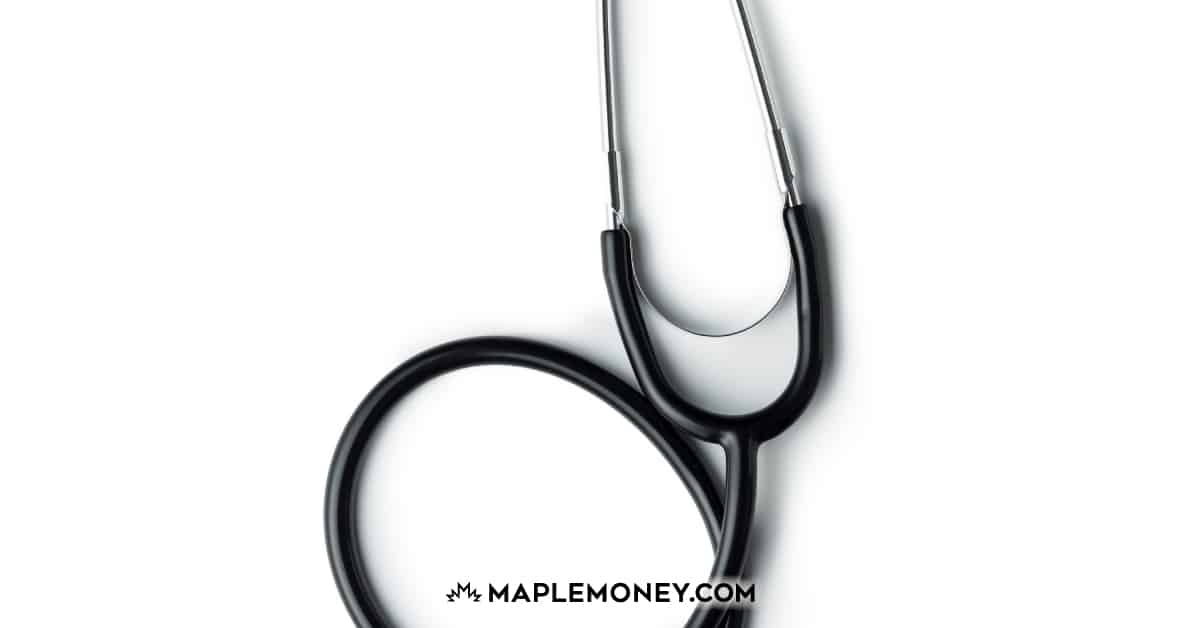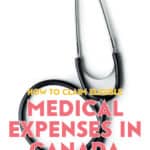How to Claim Eligible Medical Expenses in Canada

It’s no secret that, as Canadians, we pay more than our fair share of taxes. Seemingly everything is taxed, whether it’s our income, our property, or the fuel we put in our vehicles. Just about everything we buy, in fact, is taxed. So it’s no wonder Canadians could use a little tax relief wherever they can find it.
One way to do this is by taking advantage of a lesser-known tax credit available to Canadians, by claiming eligible medical expenses next time you fill out your income tax return. In this article, I’ll cover everything you need to know about the CRA Medical Expense Tax Credit, including what is and isn’t covered, who is eligible to make a claim, and how you can get the most from this underused credit.
What is the Medical Expense Tax Credit?
According to the CRA website, the medical expense tax credit is “a non-refundable tax credit that you can use to reduce the tax that you paid or may have to pay”. The list of eligible expenses is long, so if you’ve incurred a medical expense, you’ll want to review the list as there’s a good chance you may be able to make a claim.
Who Can I Make a Claim For?
Medical expense claims are made using line 330 or 331 on Schedule 1 of your tax return. For starters, you can claim amounts spent by you, or your spouse or common-law partner, for the following individuals, on line 330:
- You, or your spouse or common-law partner.
- Any children born in 2001 or later, belonging to you or your spouse
Also, if you paid for medical expenses for any of the following individuals, you may also make a claim using line 331 of your tax return:
- Children or grandchildren of yourself, or your spouse/common-law partner, who was born in the year 2000, or earlier
- parents, grandparents, brothers, sisters, uncles, aunts, nephews, or nieces of you or your spouse/common-law partner, providing they were residents of Canada during the year.
A List of Eligible Medical Expenses
The medical expenses that can be claimed on your tax return is huge. Below is a selection of just a few of the items you’ll find, but a full list is available on the CRA site.
- Cancer treatments
- Cochlear implants
- Eyeglass frames and lenses, contact lenses
- Insulin and related products
- Medical marijuana
- Medical services outside of Canada
- Payments to registered nurses, dentists, and medical practitioners
- Prescription drugs and medications
- Pacemakers
- Scooter
- Service animals
- Therapy (prescribed)
- Travel expenses (various distances)
- Wheelchairs and other mobility aids
Ineligible Medical Expenses
Not surprisingly, not all medical-related expenses are eligible to be claimed. For example, you cannot include membership fees to a gym or fitness club, regardless of the positive effect they may have on your health. Surgery that is of a purely cosmetic nature ie. hair replacement, liposuction, or Botox treatments, cannot be claimed. I should note, cosmetic surgery may be eligible if it’s considered medically necessary. Non-prescription birth control devices are also ineligible.
How Does the Medical Expense Tax Credit Work?
Eligible medical expenses that have not already been reimbursed by a separate healthcare plan, for example, through an employer plan, can be claimed for the amount that exceeds a predefined threshold. For 2018, that threshold is the lesser of 3% of your net income, or $2,302.
Either spouse can make the claim, however, it’s usually more advantageous for the lower-income earning spouse to do so, as their threshold will be lower, allowing more of the expense to be applied as a tax credit. For example, if the spouse with the higher income has a net income of $80,000, 3% would be $2,400, so the threshold they would use would be $2,302. This means that only expenses exceeding $2,302 can be claimed.
However, if the net income for the lower-earning spouse is $30,000, then their threshold would only be $900, allowing for an additional $1400 of medical expenses to be claimed. So, while it’s not always the case, you can see here why it’s usually beneficial for the lower-income earning spouse to claim the tax credit.
What Period of Time Can I Make a Claim For?
In order to calculate your eligible expenses, you must use a 12-month timeframe ending sometime during the year. The time period does not have to run from January to December, however. The timeframe you choose will depend upon when expenses were incurred. For example, if you had significant expenses in October of 2018, and then again in August of 2019, you may want your 12-month period to end on August 2019, in order to capture both months that you had increased medical costs.
Do I Need to Keep My Receipts?
I know, this sounds like a no-brainer, but it’s certainly worth mentioning. While you won’t need to send your receipts in with your tax return, you do need to have them available in case you are asked for them at a later date. According to CRA, receipts should be more than just a proof of payment and need to include the specific procedure that was paid for, the patient’s name (to ensure eligibility), as well as the name of the medical provider.
The Effect of Cannabis Legalization on Eligible Medical Expenses
Upon legalization in the fall of 2018, the cost of cannabis, as well as several cannabis-related products, we included as an eligible medical expense. To qualify, patients must obtain a valid medical document allowing for the use of cannabis for medical reasons, provided by a licensed healthcare provider. Eligible products include cannabis, cannabis oil, and cannabis plant seeds.
Tips for Claiming Eligible Medical Expenses
Below, I’ve included a few helpful tips you can use when claiming medical expenses. Keep in mind, many of these follow a general rule, and it’s always important to understand your personal situation before making a final decision. It’s also a good idea to consult with a tax professional before claiming medical expenses on your tax return.
- The lower income-earning spouse should usually make the claim
- Prepay for future medical expenses you wish to claim in the current year
- Consider including all family medical expenses on one tax return
- Eligible expenses for a 12-month period ending in the current year
- Remember to always keep receipts for any eligible medical expenses.
- Excess, out-of-pocket expenses not covered by private health insurance might be covered
- The medical expense tax credit is calculated at the lowest marginal tax rate (will vary by province)
Final Thoughts on the CRA Medical Expense Tax Credit
It’s fair to say that the medical expense tax credit is one of the most underused tax strategies available to Canadians. I think that’s due, in part, to its perceived complexity. The list of eligible and ineligible expenses is long, you need to understand who is eligible to make a claim, and for whom, and you need to make sure you save your receipts, which takes some forward planning.
That said, the cumulative tax savings from this credit could really add up over the years, if you take the time to understand how it works, and then use it to your advantage.


Comments
Hello,
I don’t believe that glasses frames can be deducted.
Hi Charles, I can’t find anything that states that. Most examples say “eyeglasses” or “prescription glasses”, which I believe to mean the whole thing, lenses and frames.
I realize that you’ve provided the CRA list of eligible items, however I think it’s worth a specific mention that Health Premiums paid are also considered eligible medical expenses. This is often the expense that will tip the scales in the claimant’s favour.
FYI: For several years we claimed mileage for travel to our family doctor who is 45km from where we live. We also have claimed for mileage when it is necessary to travel to an out of town hospital for specific treatment or procedures. eg: MRI, colonoscopy, etc.
We just got informed this is no longer eligible as this service is available where we live.
Unfortunately, expeditious treatment is not always available.
Just another fallout from nit-picky tax processors.
When my ex and I were together, the only time we had an audit had to do with medical expenses and the CRA wanted to see the receipts. My accountant had said when medical expenses are over $10,000 that usually flags. My ex had surgery that cost around $7,000, the MRI was around $1,000, and so on. This was all private medical costs. He was able to get the surgery done in about 3 weeks, as opposed to waiting about 18 months through the province medical services health plan.
When I worked, based on my salary I was able to claim medical expences at $3200.
I retired in Sept. 2018 and living on a fixed income.I have no health insurance…but now my medical amount for a claim will be based on a lower income with higher medical expenses.What do single non pensioned people do?
Apply for the Trillium benefit of you live in Ontario.